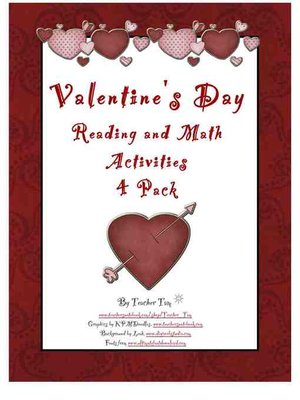
Sign up to save your library
With an OverDrive account, you can save your favorite libraries for at-a-glance information about availability. Find out more about OverDrive accounts.
Find this title in Libby, the library reading app by OverDrive.



Search for a digital library with this title
Title found at these libraries:
| Library Name | Distance |
|---|---|
| Loading... |
This pack includes 2 math activities, 1 reading activity, and 1 combination reading and addition game. There is one sight word emergent reader with 2 versions, one sight word addition game with pre-primer through first grade versions, one math game where students practice addition of sums less than 12 and work on even and odd numbers, and another math game where students practice ways to make 10. All of these activities were created to be used in a large group, for centers, or as take home activities.
These activities address the following Common Core Standards for Math and Language Arts in Kindergarten and First Grade:
K.CC.2. Count forward beginning from a given number within the known sequence (instead of having to begin at 1).
K.CC.4. Understand the relationship between numbers and quantities; connect counting to cardinality. When counting objects, say the number names in the standard order, pairing each object with one and only one number name and each number name with one and only one object. Understand that the last number name said tells the number of objects counted. The number of objects is the same regardless of their arrangement or the order in which they were counted.
K.OA.5. Fluently add and subtract within 5.
1.OA.5. Relate counting to addition and subtraction (e.g., by counting on 2 to add 2).
1.OA.6. Add and subtract within 20, demonstrating fluency for addition and subtraction within 10. Use strategies such as counting on.
RF.K.1. Demonstrate understanding of the organization and basic features of print. Follow words from left to right, top to bottom, and page by page. Recognize that spoken words are represented in written language by specific sequences of letters. Understand that words are separated by spaces in print.
RF.K.3. Know and apply grade-level phonics and word analysis skills in decoding words. Read common high-frequency words by sight (e.g., the, of, to, you, she, my, is, are, do, does). Distinguish between similarly spelled words by identifying the sounds of the letters that differ.
RF.K.4. Read emergent-reader texts with purpose and understanding.
RF.1.1. Demonstrate understanding of the organization and basic features of print. Recognize the distinguishing features of a sentence (e.g., first word, capitalization, ending punctuation).
RF.1.3. Know and apply grade-level phonics and word analysis skills in decoding words. Decode regularly spelled one-syllable words. Recognize and read grade-appropriate irregularly spelled words.
RF.1.4. Read with sufficient accuracy and fluency to support comprehension. Read grade-level text with purpose and understanding. Read grade-level text orally with accuracy, appropriate rate, and expression. Use context to confirm or self-correct word recognition and understanding, rereading as necessary.
K.CC.5. Count to answer how many? questions about as many as 20 things arranged in a line, a rectangular array, or a circle, or as many as 10 things in a scattered configuration; given a number from 1 to 20, count out that many objects.
K.OA.1. Represent addition and subtraction with objects, fingers, mental images, drawings1, sounds (e.g., claps), acting out situations, verbal explanations, expressions, or equations.
K.OA.2. Solve addition and...
Visit my shop, TeacherTam, at Teacher's Notebook.
Or view this product, Valentine's Day Math and Reading Activities 4 Pack.







